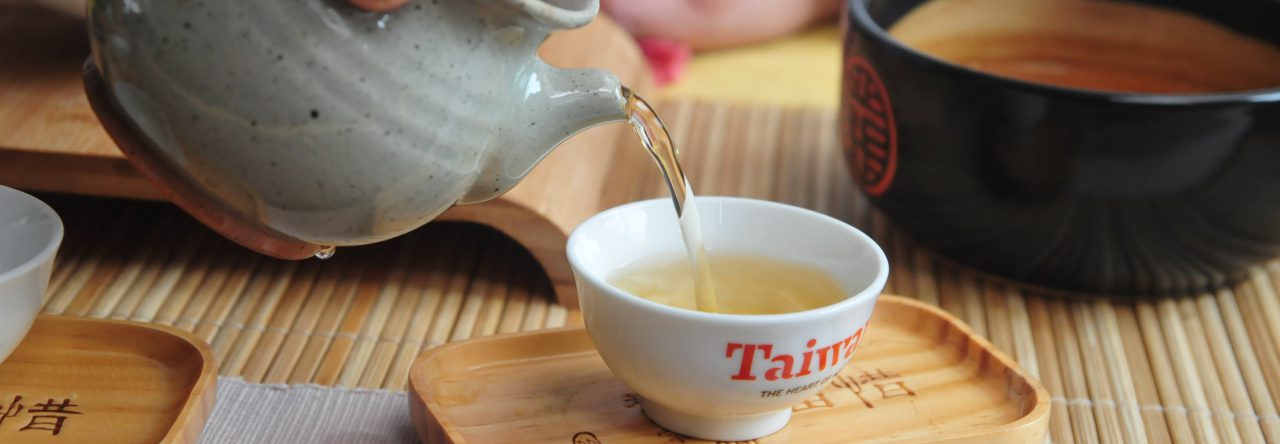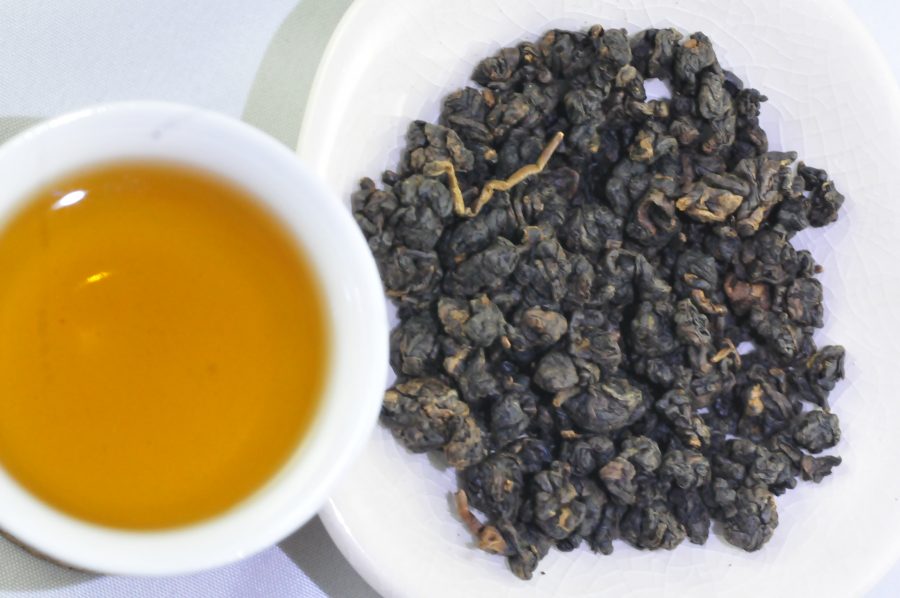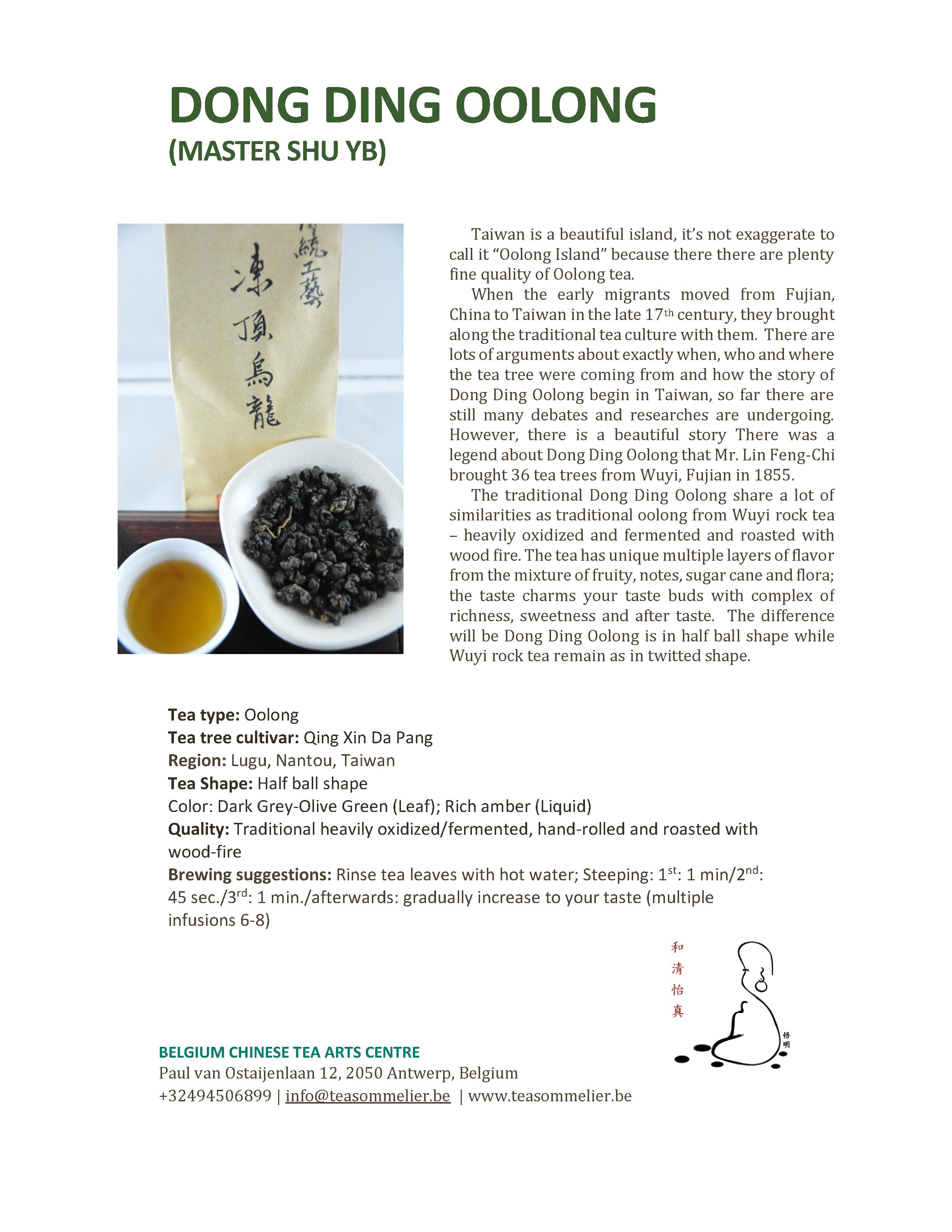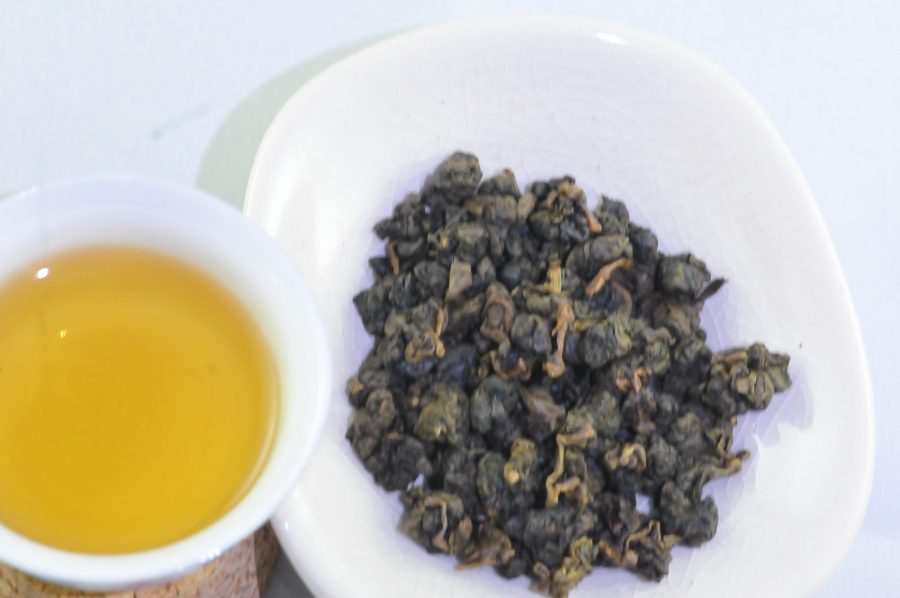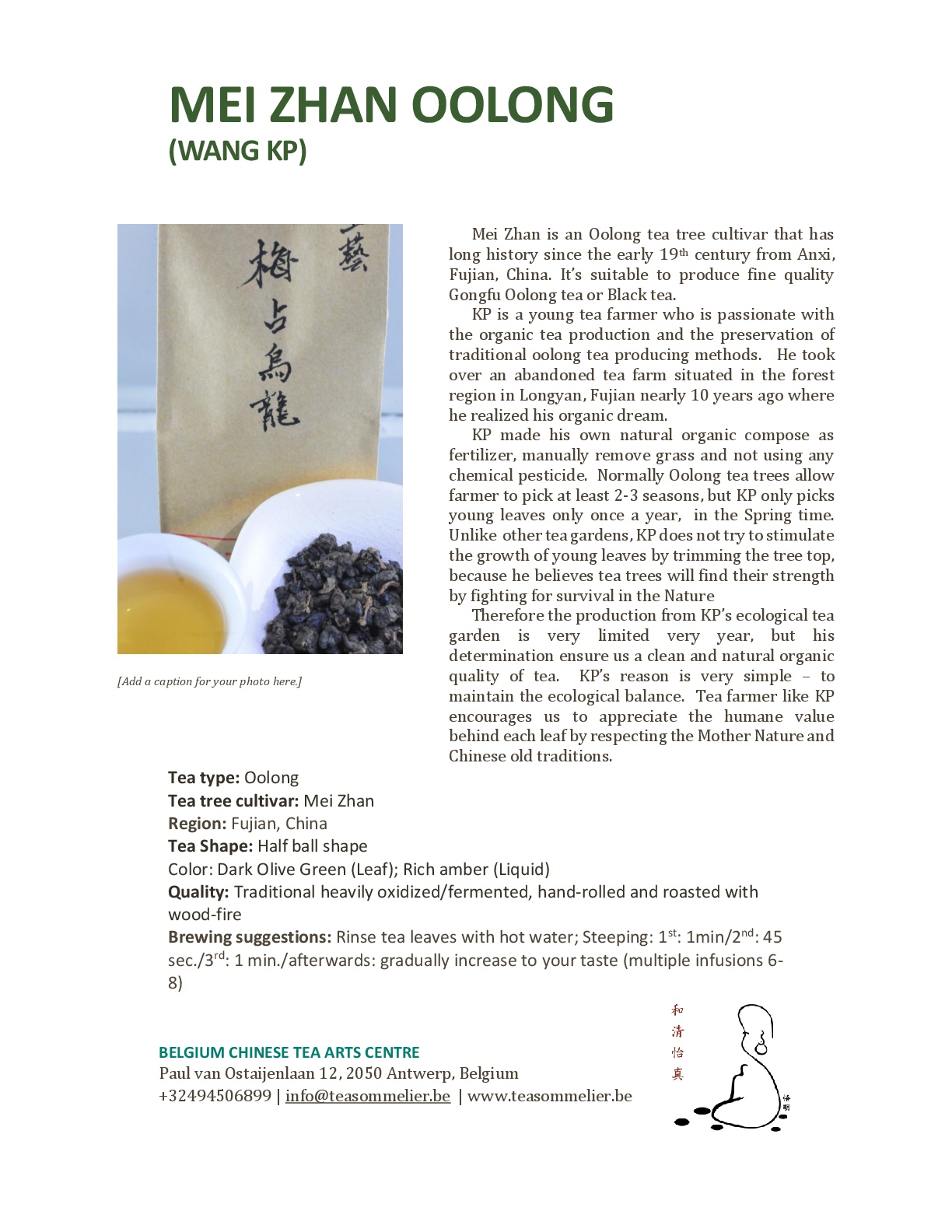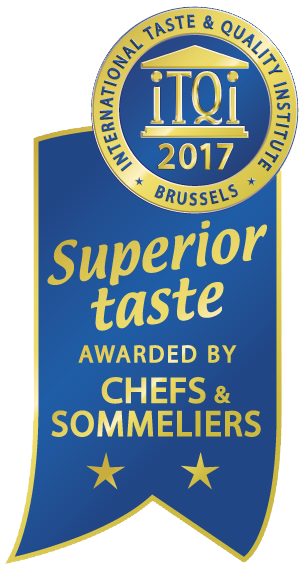
Category: Oolong Page 2 of 3

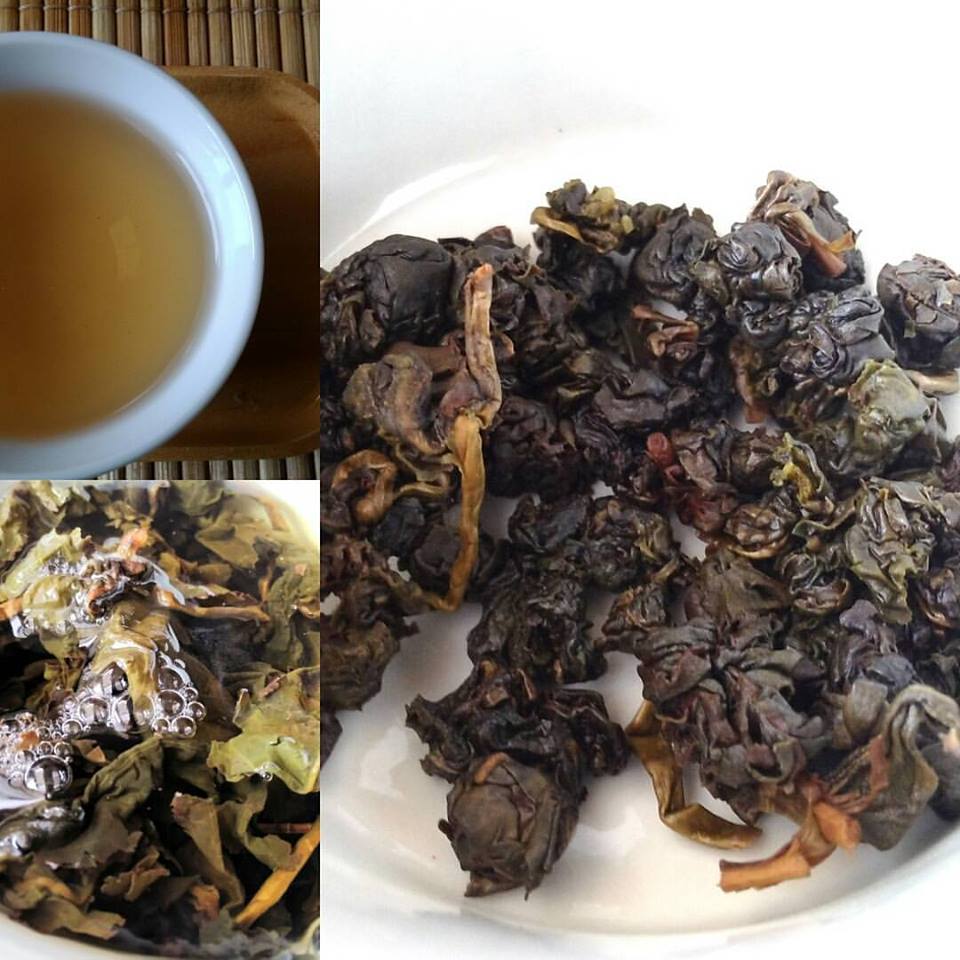 This tea field is in the forest region and adapting the natural organic management methods to maintain the natural botanical harmony. The field was abandoned for more than 7 years before my friend took over to plant tea trees. Even though with
This tea field is in the forest region and adapting the natural organic management methods to maintain the natural botanical harmony. The field was abandoned for more than 7 years before my friend took over to plant tea trees. Even though with 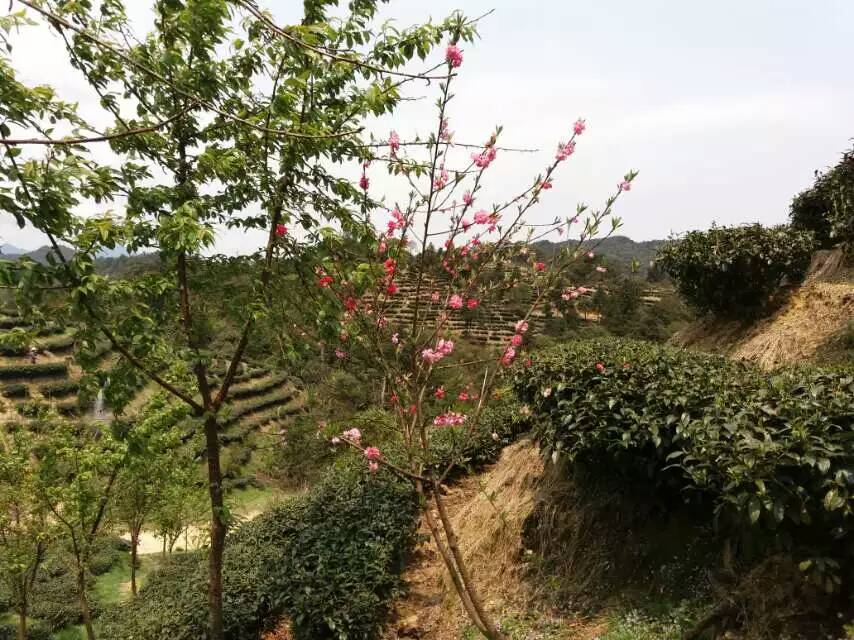 7 years abandonment, there are still some pesticide used in the rice field in the past remained in the soil. With the natural organic care, we believe the Mother Nature will eventually clean up all those human pollutions from the past.
7 years abandonment, there are still some pesticide used in the rice field in the past remained in the soil. With the natural organic care, we believe the Mother Nature will eventually clean up all those human pollutions from the past.- Tie Guan Yin
- Jin Xuan
- Mei Zhan
Tie Guan Yin and Jin Xuan has already p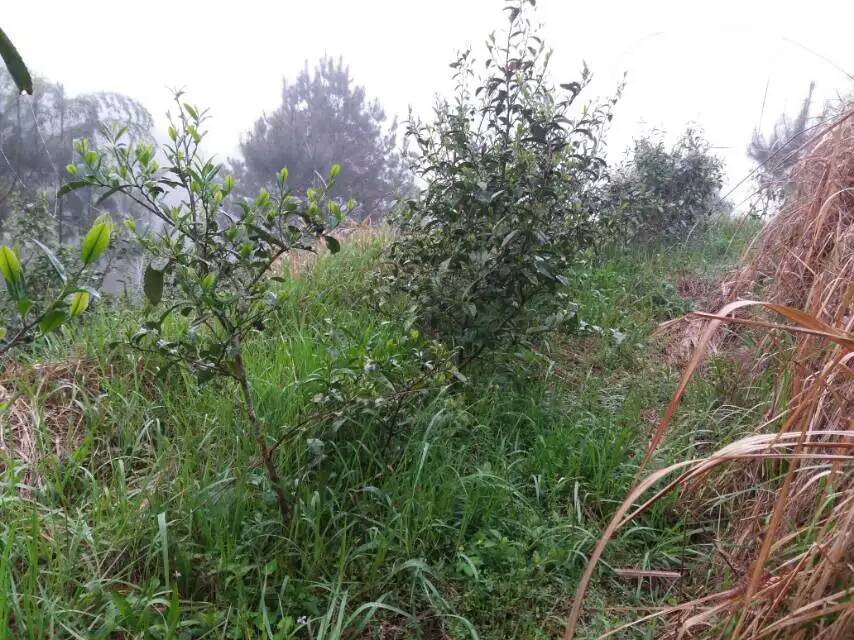 assed the pesticide analysis in Europe last year. Now the Mei Zhan has again been confirmed as clean and safe tea.
assed the pesticide analysis in Europe last year. Now the Mei Zhan has again been confirmed as clean and safe tea.
KP and I were friend nearly 15 years, he shares the same devotion to the balance in Nature, the purity in quality and taste and respect the ancient Chinese production wisdom. Unlike most oolong tea farms, he only picks once a year in Spring, therefore, there are only limited quantity available.
These botanical quality traditional wood-fire roasted oolong are available in our Centre for those who appreciate her purity and beauty.
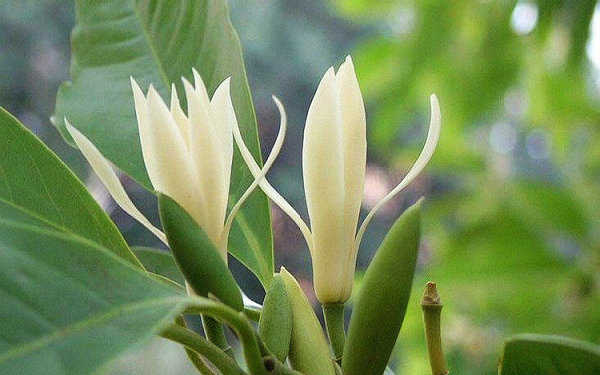 YuLan is also known as White Michelia, a small white flower with very gentle and sweet scent. In Taiwan often you found people selling YuLan flower in the market or on the street. When I was little, parfum was unthinkable. So we bought a small flower and pinned it on cloth or put in the hand bag as natural parfum.
YuLan is also known as White Michelia, a small white flower with very gentle and sweet scent. In Taiwan often you found people selling YuLan flower in the market or on the street. When I was little, parfum was unthinkable. So we bought a small flower and pinned it on cloth or put in the hand bag as natural parfum.
YuLan Dan Cun Oolong
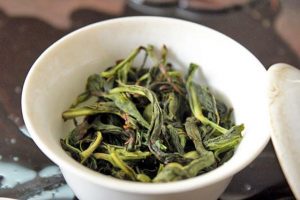 Dan Cun is a traditional oolong from Guang Dong Province, China. YuLan Dan Cun are cultivated in Feng Huang tea region in ZhaoAn County in Guang Dong. The mother plant is older than 200 years old.
Dan Cun is a traditional oolong from Guang Dong Province, China. YuLan Dan Cun are cultivated in Feng Huang tea region in ZhaoAn County in Guang Dong. The mother plant is older than 200 years old.
It’s picked from 1 young leaf + 3 leaves. Even though tea farmers are using rolling machine to improve the production quality, but today still follow the old traditional methods.
Gentle sweet floral flavor guide your imagination to a romantic warmth with the natural scent of Yulan flower.
 The flavour of dried leaves is very mild, but once it’s been warmed up in a warm Gaiwan, then you will be amazed by its sweet and gentle YuLan flavour
The flavour of dried leaves is very mild, but once it’s been warmed up in a warm Gaiwan, then you will be amazed by its sweet and gentle YuLan flavour- The color of dried leaves is rather black, you probably question “is it black tea?” Once it’s been steeped in warm water, then the fresh olive green color appears, you will then amazed by its sexy flavour and taste.
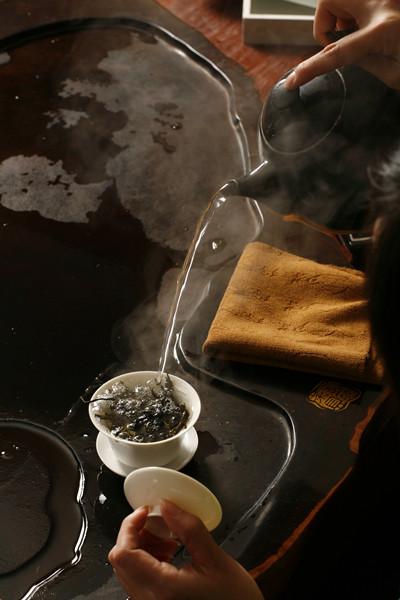 Tea liquid is clean and clear in rich amber color
Tea liquid is clean and clear in rich amber color- After the sweet and smooth with full body taste. Can simply sit back and relax to enjoy the endure after taste in your mouth and between teeth.
- You can brew it with white porcelain Gaiwan or ceramic tea pot. But personally white porcelain Gaiwan is my favourite tea mate for Dan Cun in order to enjoy its very fine flora flavour in full.
- With loose leaves you can choose the weight from 3g – 5g – 8g, subject to the preference of your taste. No matter what please bear in mind the following steeping principles – water as hot as possible, short and sexy steeping time.
YuLan Dan Cun allows you to enjoy its fine flavour and taste for more than dozen infusions. Enjoy it.
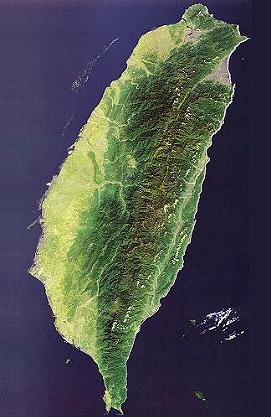 It is not exaggerating to call Taiwan as “Oolong Island”, because you can find very good quality of Oolong tea from mild-, light-, traditional- to heavy-fermented with and/or without being wood-fire roasted.
It is not exaggerating to call Taiwan as “Oolong Island”, because you can find very good quality of Oolong tea from mild-, light-, traditional- to heavy-fermented with and/or without being wood-fire roasted.
What do we benefit from the history
The history of Taiwanese tea can trace all the way back to the early 17th century when Taiwan was under the occupation and ruling by Dutch. The massive Chinese migration from the China coast provinces began after the Dutch troops were defeated by General Zhen Cheng-Kong in 1661. The early Chinese migrants brought the tea tree cultivars, the farming and processing techniques from the Mainland to Taiwan.
In 1869, English trader, John Dodd began shipping Taiwan oolong to the United States, he branded as “Formosa Oolong”, that’s why Taiwan Oolong is also known as Formosa Oolong in the world today. In the past >350 years started from the early migrants who have not only preserved the old Chinese tea traditions but also continued with various researches and renovations, so now there are twitted shape Baozhong, opened leaves as Oriental Beauty and half ball shapes Oolong tea.
Well preserved Chinese traditions, wisdom, continued research efforts to create more different tea tree cultivars, refine the production processes plus the perfect climate and geographic conditions, that’s why Taiwan Oolong is one of the unique kind in the world today.
Tai Dong is on the East coast, the tea development in Tai Dong began late comparing with other tea regions on island. The small scale of tea plantation began in abt. 1960, at the beginning there produced only black tea. Before the tea plantation and production from the Central South to the high mountain region in the Central mountain range took the lead, Tai Dong had a good period from 1980 to 1995. Starting from 1996, the glory peak was sliding down, numbers of tea manufacturers reduced from 50-60 to a dozen so as the size reduction 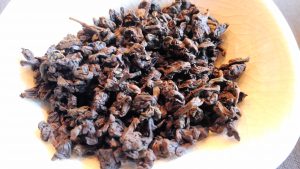 of tea plantation. In order to stimulate the growth, the Tea Research and Extension Station, Tai Dong station created a “new taste” by using pickings from Summer, Autumn/Winter and increasing the fermentation level. Because the colour of tea liquid is in
of tea plantation. In order to stimulate the growth, the Tea Research and Extension Station, Tai Dong station created a “new taste” by using pickings from Summer, Autumn/Winter and increasing the fermentation level. Because the colour of tea liquid is in 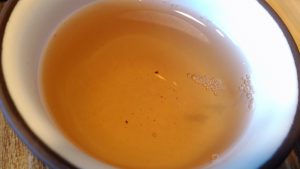 shinning orange red that similar as the black tea, so it’s named as “Black Oolong”.
shinning orange red that similar as the black tea, so it’s named as “Black Oolong”.
Process control plays the key
Withering, stirring, roasting, rolling and drying are unique processes in Oolong tea; it can be opened-, twitted or half shapes, the fermentation plays a key diversity factor to create a wide variable in Oolong tea, from mild-, light to heavy. Black Oolong emphasis the withering and stirring process, it’s perhaps the heaviest fermented and roasted Oolong of all.
Quality indicators
| Picking | Hand-picked 1 heart with 2 leaves |
| Colour of dried leaves | Dark brown amber |
| Shape | Half ball shape |
| Colour of tea liquid | Orange amber or amber red |
| Flavour | Ripe sweet fruity, leather, cinnamon & woody notes |
| Taste | The first impression is sweet and smooth as in black tea and then the endure after taste as in Oolong tea |
| Multiple infusions | 6 infusions or more |
Each person has her/his unique preferences in life, there is no better way to know one tea than having a chance to savour its flavour and taste in person.
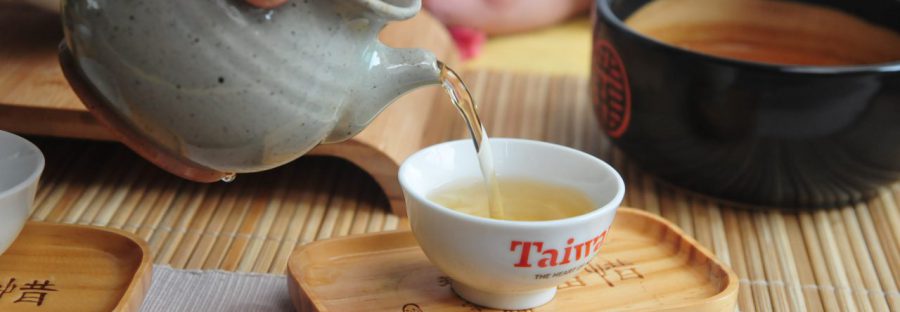
Today Jessica invited me to join the group discussion on FB about Milky Oolong based on the question from Luci:
“Milky oolong has been quite popular last few years. Many retailers and suppliers claim it’s steamed with milk, but I’m curious is it really steamed with milk or is it just aroma? Is there really an oolong tea that is steamed with milk?”
When there is a question, it opens a learning door and gives us a chance to share the right information and knowledge.
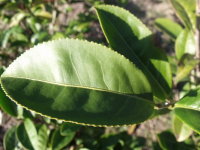
Flat round shape
Jin Xuan is a tea tree cultivar originated from Taiwan that was cultivated by the TRES (Tea Research and Extension Station) in 1981, the code is TTES#12, also known as #27 in Taiwan. It was cultivated based on “Yin Zhe Hong Xing 硬枝紅心” as patrilineal and “Taiwan Agriculture #8” as maternal. The harvest output from Jin Xuan is higher than Qing Xin Da Pang and Qing Xin
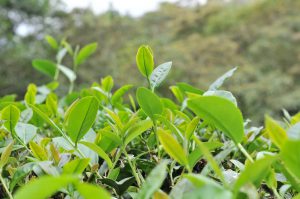
Can grow on high altitude upto 1600mt
tea tree cultivars. This tea tree cultivar has very suitable species that it can be grown on higher altitude upto +/- 1600mt.
The literal spelling of Jin is “Golden” and Xuan is also used in a Chinese medicinal herbal, Xuan Cao, it is herbal that said can reduce worries. Based on the first word, Jin, so we can picture the color of Jing Xuan as beautiful yellowish with great clarity in light amber.
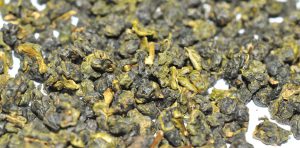
Half ball shape in Yellowish Olive Green color
The pure quality Jin Xuan Oolong has somewhat a kind of mother-breast milk creamy note from the cup, in Chinese, we write it as 乳香 (Rou Xiang ), which is different from 奶香 (Nai Xiang, Nai = milk). The one who first translated Jin Xuan based on the mother-breast milk like creamy note to Milky Oolong in English has made a big mistake. It misleads people to think dried leaves from Jin Xuan Oolong should have milky flavor. This misunderstanding gives tea traders a chance to use extra milk aromatic additives with lower quality tea leaves and advertise it as “milky oolong”.
Any dried loose leaves tea has very strong and even irritating aroma, the chance for being a flavored tea with additive aroma is very likely.
Check your The European regulations request correct and clear labelling if any additives being used in tea or blending tea.
Of course, tea suppliers won’t tell their clients the tea was actually flavored tea from the lower quality oolong tea leaves by using the milk aroma. So here it started the fancy story of telling it is steamed with milk. In Europe often consumers buy tea based on the flavor that they smell from the jar or by name; because people purchase tea by following their preference in aroma without knowing how to distinguish the authentic natural flavor from the flavored aroma tea. That’s why so many flavored teas sold in tea shops, not only in Europe, America but also surprisingly in China, Taiwan and Asia. The same tea tree cultivar would have variant flavor and taste because of difference in the Mother Nature growing environment and micro-environmental elements. Not to mention, the age of tea trees and how their manage the tea farm could also influence the quality of flavor and taste.
Another realistic issue we have to understand and accept is consumers have very limited knowledge about tea and are reluctant to pay right price without knowing the value of the pure authentic quality tea.
Jin Xuan Oolong
- Light fermented Oolong. It’s also suitable to produce Bao Zhong and Black Tea.
- Shape : half ball shape
- Color of dried leaves : Yellowish Olive green
- Flavor from dried leaves : Sweet mother-breast milk like creamy, nuts and flora
- Once leaves were warmed up in the teapot or gaiwan, then the natural scent of sweet flora, nuts and creamy notes are starting to flourish.
- Color of the tea liquid: Yellowish light amber
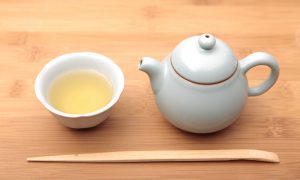 Brewing Suggestion
Brewing Suggestion
- Tea : Water : 1g : 75ml
- Water temperature : 95-99°C
- Steeping time : 1 min – 45 sec – 1 min.
- Tea ware : Porcelain Gaiwan or small tea pot
- Multiple infusion : 4-6 or more subject to the quality

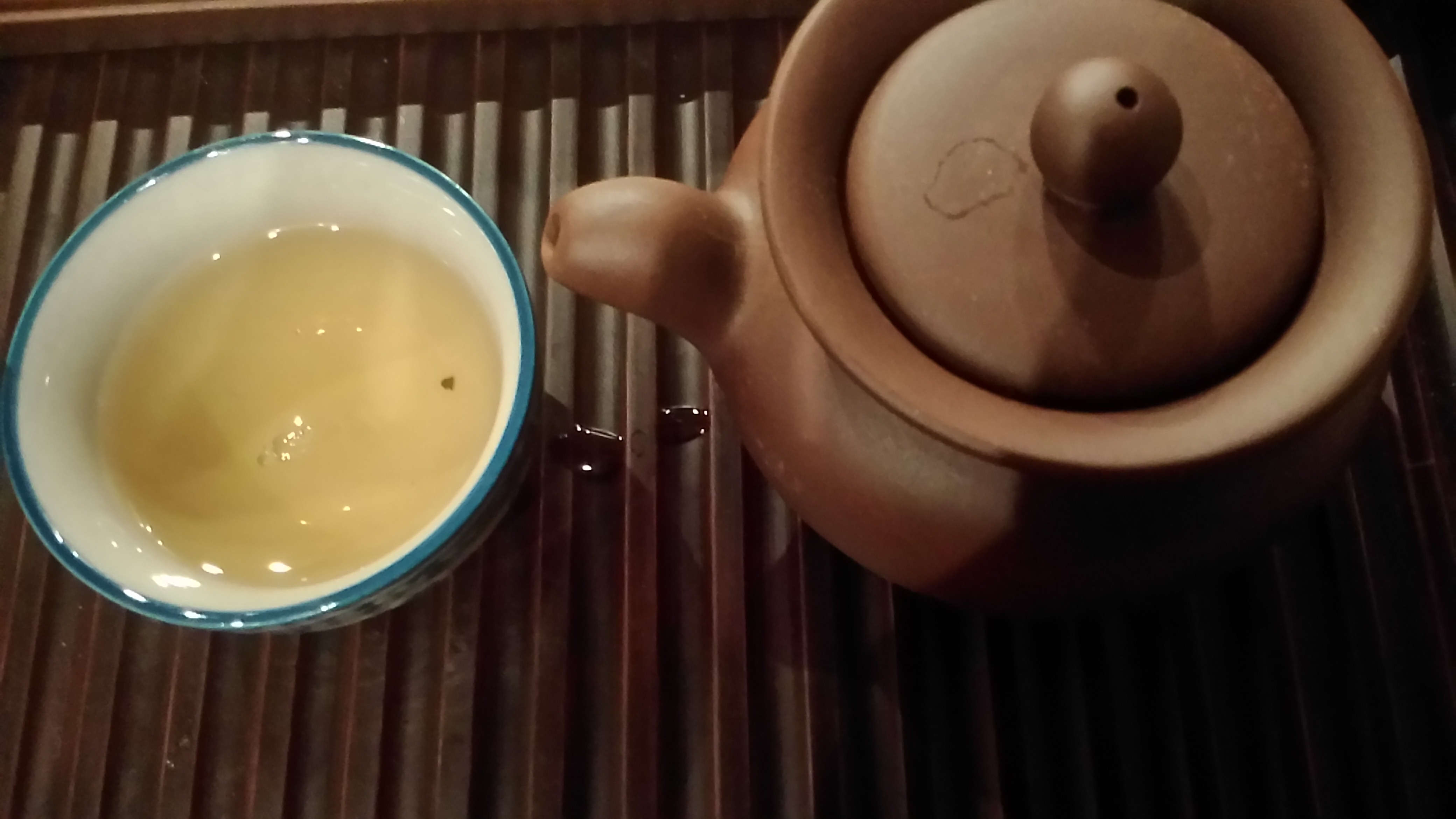
Chi Lan is an unique middle-sized tea leaf traditi onal tea tree for Oolong tea from Fujian and has a beautiful legendary story that a strange tea tree with pale green young buds in the wildness in Zhangzhou, using the ancient Oolong processing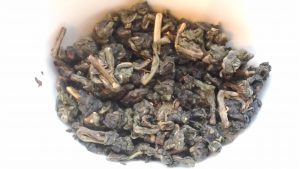 technique, tea farmer discovered the tea has a very unique flora flavor from orchid so named it as “Chi Lan”.
technique, tea farmer discovered the tea has a very unique flora flavor from orchid so named it as “Chi Lan”.
Traditional process:
- It follows the traditional fermentation and wood fired processes
- Semi- to heavy fermentation with light roasted by wood fire
Color: dark olive green
Flavor:
- With the dried leaves, the flavor are mixture of flora, mint, grass
- Once it’s being warmed up, the flora flavor jumps out and with a notion caramel
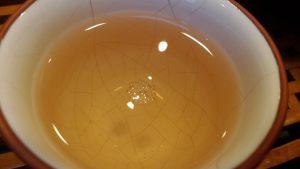
- The flora flavor stays noticeable throughout multiple infusions
Brewing:
- today I brew it : 4 gm / 200ml / 95-99°C in Yixing clay tea pot (but can also brew it with porcelain Gaiwan or ceramic tea pot)
- After the 1st rings process, keep the first infusion short, i.e. 20 – 30 seconds
- Keep the same seeping time for the 2nd and the 3rd infusions
- Can gradually increase the steeping time afterwards
Taste:
- The natural orchid flavor can intensify the taste in the first infusion, with long and complex after taste. By shorten the seeping time, then you can control the taste
- The sweet note becomes more noticeable from the 3rd infusion and onwards

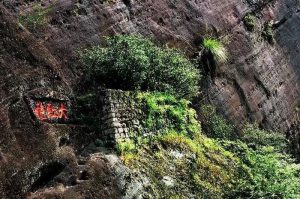 Today, YM asked for my thinking that someone she came across from Chinese social media claims her family owns 60,000km2 tea plantation as ‘family farm’ in Wuyi, Fujian and yearly tea production is about 5 ton. Is it true or false? Is this claim a little bit too exaggerate?
Today, YM asked for my thinking that someone she came across from Chinese social media claims her family owns 60,000km2 tea plantation as ‘family farm’ in Wuyi, Fujian and yearly tea production is about 5 ton. Is it true or false? Is this claim a little bit too exaggerate?
Let’s see what the actual information from the Wuyi government:
- WuYi Mountains have been listed as a UNESCO World Heritage Site for cultural, scenic, and biodiversity values since 1999; the whole of world heritage site has a total area of 99,975 hectares, the altitude is from 200 meters to 2158 meters. The bedrock lithology at Wuyi Shan is dominated by tuff, rhyolite and granite in the western part and red sandstone is common farther in the East.
- The tea plantation areas are basically divided by two parts – ZhenShan正山 (inside the protected area in the Natural Park, surrounded by a river) about 50Km2 and Tong Mou Guan is the center; outside of the river is called Wai Shan 外山. There are some differences in flavor and taste, but the most difference factor will be the price.
- The size of tea plantation in Wuyi is counted for about 82,67km2 in 2009 and the yearly Mao Cha output increased from 6,600tons in 2009 to 9,770tons in 2010.
- There are 22,000 tea farmers spreaded in Wuyi, Xing Cun, and Xing Tien in the region; there are 635 related with tea manufacture processing, number of tea shops is over 4000 in Wuyi and more than 50,000 people involve with the tea production.
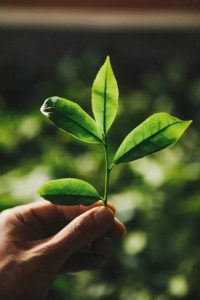 Wuyi Cai Cha (the literately translation is Vegetable tea) is a very unique and good small- to medium sized leaf bush type tea tree cultivar from China, the natural hybridization through pollen with other sort of tea tree cultivars, in Wuyi has created very diverse tea trees, i.e. Da Hong Pao, Bai Ji Guan, Tie Lou Han, Shui Jin Qui, Ban Tian Yao, etc. and on top of it, there are still many traditional tea tree cultivars, such as Shui Xien, Mei Zhan and Huang Yan, etc. these tea tree diversities allow us to enjoy very diverse flavour and taste. So Rock Tea is like Oolong not the name of tea, but only family of teas, but it is unique from Wuyi mountain region because of the growing environment.
Wuyi Cai Cha (the literately translation is Vegetable tea) is a very unique and good small- to medium sized leaf bush type tea tree cultivar from China, the natural hybridization through pollen with other sort of tea tree cultivars, in Wuyi has created very diverse tea trees, i.e. Da Hong Pao, Bai Ji Guan, Tie Lou Han, Shui Jin Qui, Ban Tian Yao, etc. and on top of it, there are still many traditional tea tree cultivars, such as Shui Xien, Mei Zhan and Huang Yan, etc. these tea tree diversities allow us to enjoy very diverse flavour and taste. So Rock Tea is like Oolong not the name of tea, but only family of teas, but it is unique from Wuyi mountain region because of the growing environment.
The black tea (known as Lapsang Souchong but in Chinese is ZhenShan XiaoZhong 正山小種) from Wuyi has once championed in the tea export from China to the Europe in Qing Dynasty suffered from the competition from India, but the traditional Rock Tea survived. Thanks to early Chinese migrants to the South East Asia who love the traditional flavour and taste. Even though in the past 20 years there are many traditional oolong adapted the light fermentation process in order to satisfy the green tea lovers or it is because the plantations are moving more higher on mountains, but when increasing the flavor to charm the nose, some actually have weakened the rhythm in the taste. Luckily the South East Asian market steadily acceptance the support the sustainability of traditional processed Oolong, including Wuyi Rock Tea are growing gradually in Europe and America in recent years and there are more and more professional tea sommeliers (Chinese or non-Chinese) appreciate the traditional flavor and taste more these days.
With the continues growing from the domestic consumer market and the new development of Jin Jun Mei in 2005, actually both tea farmers and tea process manufacturers realize the benefits of creating tea that has better value in the market. During my visit to Tong Mou Guan in Wuyi last year (2015), the tea farmer also told me that they realized the mistake they made in the past to sell the left over quality from the tea production to foreign traders that eventually hurt the market value for better quality black tea from WuYi. While I am happy that the local people start to realize how to protect the traditional inherit age and the importance of quality, on the other hand, I also realize the price of Wuyi Rock Tea is going to soar and worth for collection.
So based on the above information we can easily evaluate the claim from that Chinese sales girl, it could be possible that ‘her family farm’ owns 60km2 but unlikely 60,000km2. The question from YM is about tea but again it is more than tea. Because tea is not just about business, but it is about honesty and respect. If we could not even honest with tea then how can we expect honesty in the world of tea. But again the principle is not just about tea, it is about how we face ourselves and live our life.

Tea is more than business but is about trustful friendship.
Since I started to promote pure quality tea, I started to search for low pesticide or even organic quality Oolong tea that is being processed according to the traditional fermentation and roasted by wood. In the early 2002, the internet technology was not that advance as today, so as you can imagine that the searching of right information and honest suppliers has been a very frustrated journey. Luckily hard works, time and expensive telephone cost paid off at end. With Luck I have the pleasure of knowing KP who at that time worked for a tea estate in Fujian. KP was very honest with all the information, for example they used the organic fertilizer and very little pesticide. Most importantly, KP understood the traditional flavor and taste that I had in my memory and was willing to repeat the roasting process according to my demand.
For years, the cooperation with KP confirmed tea is more than an import/export business relationship, but it is about building and sustaining a trustful friendship.
Later KP told me he bought a small tea ground of Tie Guan Yin which has been abandoned for at least 5 years and later he acquired another abandoned farm ground to plant Mei Zhan and Jin Xuan Oolong in a very remote area in Mei Shan. He manages it according to the principle of keeping the ecological harmony, i.e. use the natural organic fertilizer, pesticide-free and limit the picking only in the Spring season. His motivation is very plain and straight forwards – For his health, he needs tea that he dares to trust for its purity and pesticide-free.
Difference between the normal organic tea plantation vs. ecological tea plantation
Organic tea plantation
As you can see that even in the resting period, even though there are some grass on the walking path, tea trees were trimmed and the tea plantation is looking pretty clean and neat
Ecological tea plantation
During the same period of time, the ecological tea plantation is an exciting playground for many insects, grass and flowers. Because Tie Guan Yin tea trees survived from not having fertilizer and human disturbs, so the growing path is in very irregular shape and some are growing much taller than the normal bush-type of tea plantation as we can see from the organic tea plantation. 
When we talked in the plantation, we felt like walking in a jungle because grass were growing taller than us. The tea plantation is surrounded by trees and there are trees also between tea trees that provide tea trees natural shadow that to protect the tea tree again the burning sun.
 When the Mother Nature takes over her role, tea leaves are growing very strongly.
When the Mother Nature takes over her role, tea leaves are growing very strongly.
There are signs of ecological balance, here and there.

 Of course there are some arguments that the tea leaf quality of ecological tea plantation because often leaves were ‘kissed’ not only by Jacobiasca formosana, but also by other insects. Yes, the ecological tea leaves can lose some points on the ‘look’ but they win many more points by its smooth sweetness flavor.
Of course there are some arguments that the tea leaf quality of ecological tea plantation because often leaves were ‘kissed’ not only by Jacobiasca formosana, but also by other insects. Yes, the ecological tea leaves can lose some points on the ‘look’ but they win many more points by its smooth sweetness flavor.
In order to ensure tea trees can live longer with great energy, therefore, KP insist to limit the tea picking to spring season only. For the sake of protecting the Mother Nature, KP is willing not to consider his business profit based on small quantity of output per year. His attitude and commitment to the Mother Nature is the most solid guarantee to the purity and quality.
his business profit based on small quantity of output per year. His attitude and commitment to the Mother Nature is the most solid guarantee to the purity and quality.
Starting from 2016, KP is implementing the ecological concept further of not even using the natural organic fertilizer.
Belgium Chinese Tea Arts Centre is proudly be the exclusive partner in Europe. With this ecological Tie Guan Yin, Mei Zhan and Jin Xuan, we are not able to speak about how many quantity per season, but really can only provide limited quantity per year.
Origin: Fujian, China / Type: Tie Guan Yin / 100% pure & nature quality / 2.5g:150ml /
95-99°C / multiple infusions >6-8

